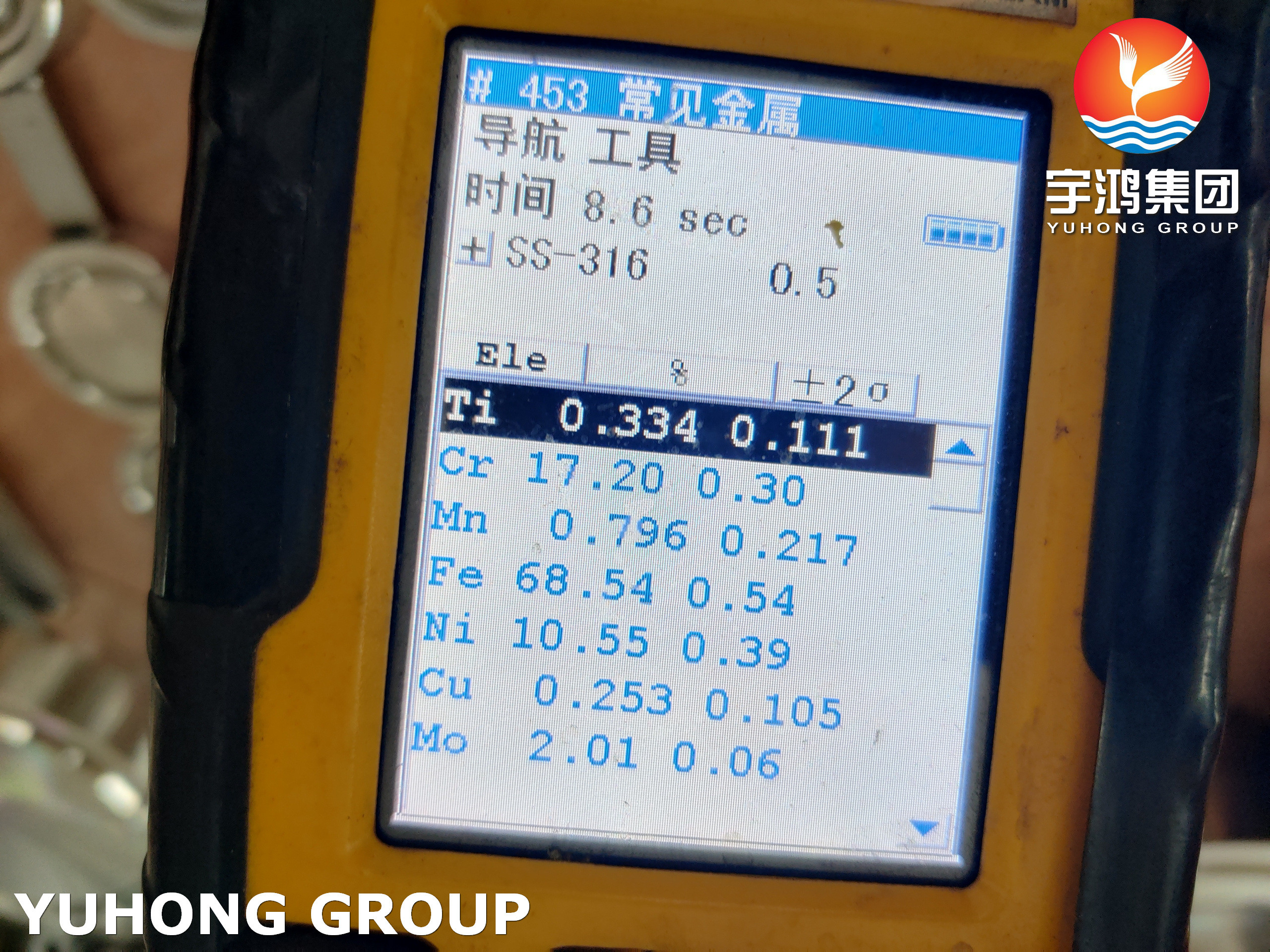Yuhong Group Co.,Ltd |
|
Verified Suppliers
|
|
ASTM A182 F316L Stainless Steel Blind Flange for Power Generation
ASTM A182 F316L Stainless Steel Flange
ASTM A182 316L is indeed a widely used austenitic stainless steel in the chemical processing industry. The addition of molybdenum to the alloy improves its corrosion resistance, particularly against chloride pitting. It also enhances the strength of the alloy at high temperatures. Additionally, the controlled addition of nitrogen helps maintain low carbon content in the 316L grade while achieving similar mechanical properties to 316L straight grade stainless steel. This combination of properties makes A182 316L suitable for various applications in corrosive environments.
ASTM A182 F316L Stainless Steel Blind Flange
A blind flange is a solid flange as shown below. The purpose of these is to block off a section of pipe or a nozzle on a vessel that is not used. (A nozzle is typically a pipe coming out of a vessel and is usually flanged so it can be connected to valves or piping). Many times a nozzle will be blanked off with a blind flange for pressure tests in a plant, or simply because the customer does not need all the nozzles that were supplied on the tank.
Blind flanges are used to test the flow of gas or liquid through a pipe or container. It helps close the end of the ductwork or container opening. It allows easy access to the pipeline when work needs to be done within the production line. They are used in high pressure applications and are available in all grades, materials, sizes and specifications.
Blind tube flanges usually have convex, flat, or RTJ faces. When the surface that needs to be raised is below 1#, the standard height is 16/400 ". Standard height 1/4 "for blind tube flanges 400# and above. JF Engineering manufactures blind tube flanges in stainless steel, carbon steel, alloy steel and Monel alloy according to various ANSI/ASME/ASTM standards.
Equivalent Grades
| STANDARD | WERKSTOFF NR. | UNS | JIS | BS | GOST | AFNOR | EN |
| SS 316L | 1.4404 / 1.4435 | S31603 | SUS 316L | 316S11 / 316S13 | 03Ch17N14M3 / 03Ch17N14M2 | Z3CND17‐11‐02 / Z3CND18‐14‐03 | X2CrNiMo17-12-2 / X2CrNiMo18-14-3 |
Production Process
The forging process generally consists of the following procedures, selecting high-quality billets for discharging, heating, forming, and cooling after forging. The forging process methods are free forging, die forging and tyre film forging. Production, according to the size of the quality of forgings, the number of production batches to choose a different forging method.
Free forging productivity is low, the processing allowance is large, but the tool is simple, versatile, so it is widely used in forging the shape of a simple single piece, small batch production of forgings. Free forging equipment has air hammer, steam - air hammer and hydraulic press, etc., respectively, suitable for small, medium and large forgings production. High productivity of die forging, simple operation, easy to achieve mechanisation and automation. Die forging parts of high dimensional accuracy, machining allowance is small, the distribution of fibre tissue forgings more reasonable, can further improve the service life of parts.
Free forging
The shape of the forging is through some basic deformation process will be billet gradually forged. The basic processes of free forging are upsetting, drawing, punching, bending and cutting.
1. Upsetting Upsetting is the operation process of forging the original billet along the axial direction so that its height is reduced and its cross-section is increased. This process is commonly used in forging gear blanks and other disc-shaped forgings. Upsetting is divided into all upsetting and partial forging two kinds.
2. Drawing length Drawing length is the forging process to increase the length of the blank and reduce the cross-section, usually used to produce shaft blanks, such as lathe spindles, connecting rods and so on.
3. Punching The forging process of punching out through-hole or non-through-hole in the blank with a punch.
4. Bending the billet into a certain angle or shape of the forging process.
5. Twisting A forging process in which one part of a billet is rotated at a certain angle relative to another part of the billet.
6. Cutting The forging process of cutting the billet or cutting off the head.
Die forging
Die forging is known as model forging, the heated billet placed in the forging equipment fixed in the die forging.
1.the basic process of die forging die forging process: material, heating, pre-forging, final forging, punching even skin, cutting edge, tempering, shot blasting. Commonly used processes are upsetting, elongation, bending, punching, moulding.
2. Commonly used die forging equipment Commonly used die forging equipment are die forging hammer, hot die forging press, flat forging machine and friction press. Commonly speaking, the quality of forged flange is better, generally produced by die forging, with fine crystal structure and high strength, of course, the price is also more expensive. Whether casting flange or forging flange belongs to the flange commonly used manufacturing methods, see the need to use the strength requirements of the components, if the requirements are not high, you can also choose the turning system flange.
3. Cut flange
In the middle plate directly cut out the flange to leave the processing amount of internal and external diameter and thickness of the disc, and then for bolt holes and waterline processing. The flange produced in this way is called cut flange, the maximum diameter of such flange is limited by the width of the centre plate.
4. Rolled flange
The process of cutting strips and then rolling them into rounds is called rolling, which is mostly used in the production of some large flanges. After the success of rolling, welding, and then flattening, and then the water line and bolt hole processing.
Application
